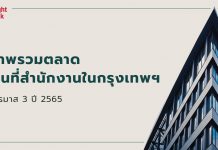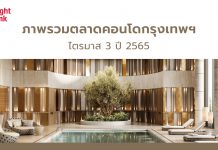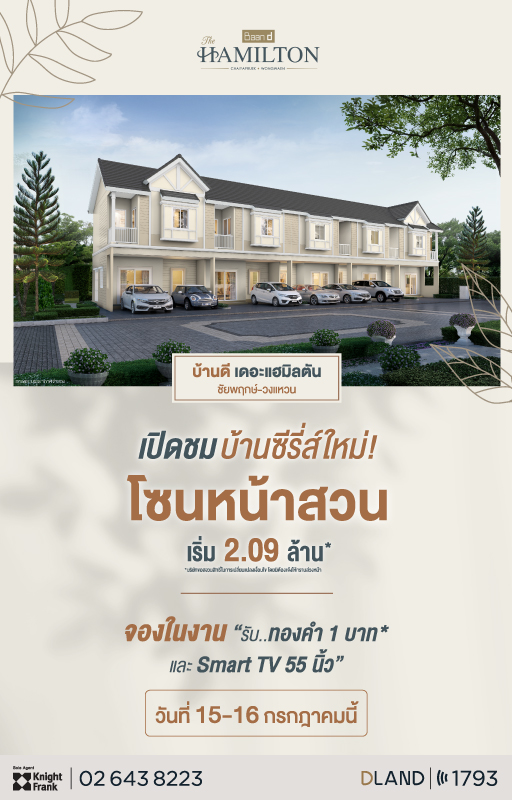Highlights
- Average Grade A rents rose to 1,000 baht per square metre per month for the first time, as demand continues to outstrip supply.
- Tenants leased 55,943 square metres of new office space in Bangkok in the fourth quarter.
- Sukhumvit road between Asoke and Chidlom proved to be the most popular location with the highest occupancy rate of 96.58%.
- At the end of 2017, there was approximately 4.92 million square metres of office space in Bangkok, with another 165,710 square metres forecasted to come on stream in 2018.
According to Knight Frank Thailand Research, In 2018, it is expected 171,000 square meters of new supply to enter the market, all of which will be located outside of the areas that we would typically define as the Central Business District. Co-working spaces and serviced offices continue to comprise one of the fastest growing workplace movements in Bangkok. The total number of co-working spaces has grown from fewer than 20 locations to over 100 locations over the past five years. However, the traditional office space remains the most popular rental option. The growth of co-working spaces poses no threat to the traditional office market; in fact, both segments rise together.
Rental Rates
In 2017, Grade A office rents reached record levels, as the average price of grade A space inched past the THB
1,000 per square metre per month threshold for the first time on record. The overall average rental rate was 727 baht per square metre per month, representing an increase of 3.56% year on- year, from just 702 baht per square
metre per month in Q4 2016, whilst Grade B rents reached 726.7 baht per square metre and Grade C hit 454.4 baht per square metre, up by 3.8% and 1.4% YoY, respectively.
In 2017, office buildings on Sukhumvit Road between Asoke and Chidlom proved to be the most popular, with the highest average occupancy rate of 96.58%. Furthermore, they saw rents increase by one of the largest margins in the city, as they climbed by 7.4% throughout the year.
Figure 1
Asking Rent of Bangkok Office by Grade, 2012 to 2017
 Source: Knight Frank Thailand Research
Source: Knight Frank Thailand Research
Table 1
Office Asking Rent by Grade and Percentage Increase
 Source: Knight Frank Thailand Research
Source: Knight Frank Thailand Research
Figure 2
Asking Rent of Bangkok Office by Major Roads, Q3 – Q4 2017
 Source: Knight Frank Thailand Research
Source: Knight Frank Thailand Research
Demand
In Q4 2017, the net occupied space stood at 4,546,138 square metres, representing an overall occupancy rate of 91.35%, which declined YoY by 1.1%. However, this is not the case throughout the entire market.
Grade A office buildings improved the occupancy rate throughout the year at 94.02%, compared with 93.51% of Q3 2017. Meanwhile, the occupancy rate of Grade B and Grade C was 93.93% and 89.07%, respectively.
Net take up (or the amount of new office space leased) in Bangkok in Q4 2017 was 55,943 square metres. Meanwhile, 82,639 square metres of space was surrendered, or returned to landlords, over the same period. This means that the market actually experienced a negative net absorption of -26,696 square metres.
However, whilst the overall market experienced a decline in occupancies, the grade A sector in Q4 2017 saw its net absorption actually increase by 24,000 square metres.
Meanwhile, some of the negative net absorption seen in the grade C sector can be attributed to the temporary closure of two buildings for renovation, which are expected to re-open in late 2019.
From Table 3, throughout 2017, the net absorption as a whole was just 6,300 square metres and only the grade B sector saw an actual increase.
To a certain extent, that has been a flight to quality. Occupancies in grade B buildings have climbed, and they have fallen in grade C properties. However, this trend is not as apparent in the grade A sector. The total take up of grade A space in 2017 was 88,000 square meters, but about 106,000 square meters of space in this same sector was returned to landlords over the same period.
Meanwhile, tenants sought to control costs, either through relocation to buildings with lower rents, or by increasing efficiency.
Figure 3
Office Supply, Demand and Occupancy Rate, 2012-2017
 Source : Knight Frank Thailand Research
Source : Knight Frank Thailand Research
Note: These figures exclude multi-owner occupied premises and office buildings smaller than 5,000 square metres.
Table 2
Occupancy Rate by Grade from Q1 2015 to Q4 2017
 Source : Knight Frank Thailand Research
Source : Knight Frank Thailand Research
Table 3
Quarterly Net Take-Up, Net Absorption and Net Surrender by Grade
 Source : Knight Frank Thailand Research
Source : Knight Frank Thailand Research
Supply
As of December 2017, the total supply of Bangkok office buildings grew by 45,121 square metres to 4,918,131 square metres as five new buildings were completed.
The total rental space of grade A office is 1,313,526 square metres, remaining stable from 2016. At the same time, the total rental space of the grade B sector remained at 2,068,095 square metres whist the rental space of Grade C office included around 1,536,010 square metres, decreasing from 1,614,375 square metres from 2016.
Figure 4
Quarterly Net Take-up, Net Absorption and Net Surrender from Q1 2014 to Q4 2017
 Source : Knight Frank Thailand Research
Source : Knight Frank Thailand Research
Note: These figures exclude multi-owner occupied premises and office buildings smaller than 5,000 square metres.
Future Supply
In 2018, it is expected to see five new properties enter the market with approximately 171,110 square metres. In addition to projects under construction, the total amount of new supply of 768,609 square metres or more would be added to the market in 2019-2023. With this estimated increase, the total office supply will be around 6.0-6.2 million square metres in 2023
.
Figure 5
Bangkok Office Supply and New Supply from 2012-2017















